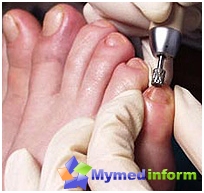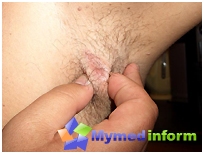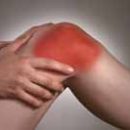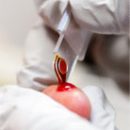What is an ingrown nail? What are the causes and manifestations of the disease? What will happen if you run the disease? Answers to these questions you will find in the article.
Content
What is an ingrown nail
 Pretty common pathology. It lies in the fact that the edge of the nail begins to grow into soft fabrics of the phalange of the finger. This process is accompanied by an inflammatory response, pain and sometimes infectious complications. Usually ingrown nail - it is a pathology that amazes most often the thumb of foot is usually one-sided, but often the big fingers of both stops may be affected. Ingrown nail of other fingers is extremely rare.
Pretty common pathology. It lies in the fact that the edge of the nail begins to grow into soft fabrics of the phalange of the finger. This process is accompanied by an inflammatory response, pain and sometimes infectious complications. Usually ingrown nail - it is a pathology that amazes most often the thumb of foot is usually one-sided, but often the big fingers of both stops may be affected. Ingrown nail of other fingers is extremely rare.
Ingrown nail cause
A certain reason for the ingrown nail still failed to determine. There are various predisposing factors, for example, wearing close, narrow shoes, nail haircut with the transition to its side edge. Nail phalanx injury is also a fairly frequent factor predisposing to an incurred nail. A certain role is played in this pathology and hereditary factor. In addition, the ingrown nail is more common in any other pathologies.
How does the ingrown nail manifest
Ingrown nail begins to pay attention when the inflammatory process is joined. At the same time, in the field of phalange of the finger, from the side of the elderly nail, there is some edema, redness, when pressing pain - pain. In addition to infection, purulent discharge appears. With a long, chronic flow of an ingrown nail in the field of soft fabrics of the nail phalanx, the so-called hypergranulation appears - excessive growth of soft tissues caused by a long irritation of their nail plate and the presence of chronic inflammation.
The aggravation of an ingrown nail makes it difficult to wear a shoe, the patient has to wear shoes with a wide sock or even without sock. Often pain make it difficult and walking. Permanent department of pus causes an unpleasant smell, violates the hygiene of the legs.
If not to treat an ingrown nail
The long-term chronic course of the inflammatory process in the field of nail phalanx may result in further complications - the addition of a more pathogenic infection, with its transition to gangrene or even osteomyelitis (inflammation of the bone of the phalanx). As a result, ultimately, this may lead to the need for an amputation of nail phalanx.









